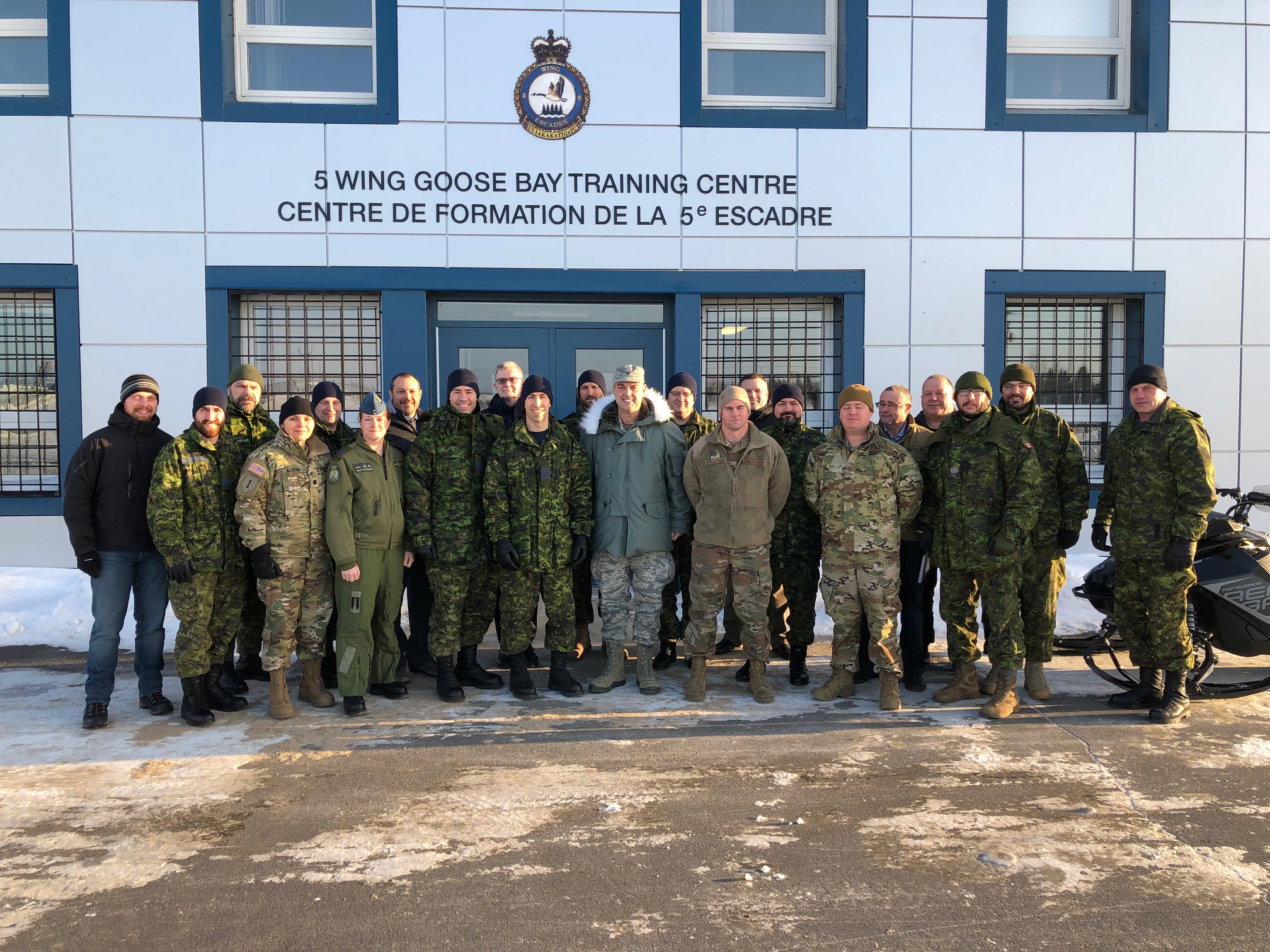Third Arctic Air Power Seminar welcomes international attendees
News Article / February 4, 2020
Click on the photo under “Image Gallery” to see more photos.
1 Canadian Air Division Public Affairs
Members of the Canadian Armed Forces (CAF), the United States Department of Defense and other partners met at 5 Wing Goose Bay, Labrador, from January 20 to 22, 2020, to discuss the challenges of operating in extreme cold weather conditions.
The meeting, known as the Arctic Air Power Seminar, was the third in a series, and focused on runways and on landing strips maintained for aircraft on skis, as well as techniques to rapidly repair unforeseen damage to an airfield, and enable smooth and continuous air operations in the unforgiving Arctic environment.
“We are seeking enhanced cold-weather capabilities that can be used when needed to support Canadian priorities,” said United States Air Force Brigadier General Ed Vaughan, Deputy Commander Canadian NORAD Region and deputy Combined/Joint Forces Air Component commander for 1 Canadian Air Division. “Our goal is to build relationships, share ideas, and catalyze innovation with our partners.”
“These seminars help fill in gaps in knowledge and connections that result in accelerating solutions to practical problems,” he said. “Some of the most talented people I’ve met are involved in shaping our solutions.”
The challenges to which Brigadier General Vaughan alludes relate to factors such as climate change; fostering better alignment with indigenous community priorities; supporting and enabling a sparse population and work force; and logistical hurdles, including fuel, communications, food, supplies, and more.
Under the Government of Canada’s “Strong, Secure, Engaged” mandate, continental defence and an enduring presence in the Arctic are key priorities. In order for 1 Canadian Air Division to support northern operations such as continental defence and early warning, Search and Rescue, disaster relief support to Provincial and Territorial authorities (when requested), and a response to other emergencies, it will require unique solutions to a variety of unique challenges.
But the military has only part of the equation. Solutions will require a whole of government approach, which includes industry representation.
One notable organization overcoming many of the Arctic’s operational challenges is the US government’s Cold Regions Research and Engineering Laboratory (CRREL), based in Hanover, New Hampshire. Representatives from CRREL attended the seminar and shared many invaluable observations and experiences.
A United States Army Corps of Engineers research facility, CRREL is the national resource for cold regions science and engineering. They solve scientific and engineering challenges in cold and complex environments through development and application of effective, interdisciplinary solutions. One notable achievement of CRREL’s predecessor was the design and construction of the AL-CAN highway, built in 1942.
“Our goal is to develop solutions, in order to enable capabilities,” said Jason Weale, Associate Technical Director for Cold Regions Science and Engineering. “But it isn’t easy. When an organization approaches us with a problem, it is usually because their biggest and best minds have yet to come up with a viable, sustainable solution… which is why taking the time to understand and define the problem is such a vital part of the process we undertake to develop solutions and enable capabilities.”
A ground-breaking project Mr. Weale and his colleague, Dr. Martin Jeffries, shared during the seminar was the development of a sled-based fuel bladder delivery system, which is employed annually to safely transport large quantities of heating and aviation fuel across vast distances in Antarctica, from McMurdo Station to the National Science Foundation’s South Pole Station.
The fuel bladder sled system, as well as many other developmental technologies, have applications throughout the high Arctic, to remote communities and research stations in extreme cold weather environments.
The seminar also heard from airfield operations personnel from Serco, the contractor that has provided support services to 5 Wing Goose Bay for more than 20 years. These defence team partners are well versed in extreme cold weather airfield operations, and provided invaluable insight toward the challenges of operating heavy equipment in the extreme cold, as well as deal with snow and ice control in an area that routinely receives more than four metres of snow each year.
“5 Wing Goose Bay is proud to be involved in cold weather planning and collaboration initiatives like the Arctic Air Power Seminar,” said 5 Wing Goose Bay commander Colonel Stephane Racle. “Goose Bay is the North. Many of the challenges that we overcome here during the winter months are the same or extremely similar to those one would encounter in the Arctic, which makes this an ideal place to discuss and develop solutions.”
Finally, members from the 123d Contingency Response Group shared their operating capabilities. Based out of Louisville, Kentucky, the personnel at the 123d are able to deploy a scalable airfield assessment and activation team to nearly anywhere on the globe.
CAF engineers, logisticians, planners and representatives of a host of other disciplines came away from the seminar with a newly expanded network of knowledge and expertise.
Previous Arctic Air Power seminars focused on power production in remote areas, as well as Arctic airlift capabilities, such as the cooperation we saw between the US Air Force (109th Airlift Wing) and Canada when we executed Operation Boxtop, the annual replenishment mission to CFS Alert.
Future seminars will focus on fuel distribution, snow and ice removal at remote Arctic airfields, communications in the north, and how we can align our goals with those of remote northern communities and industry partners.


